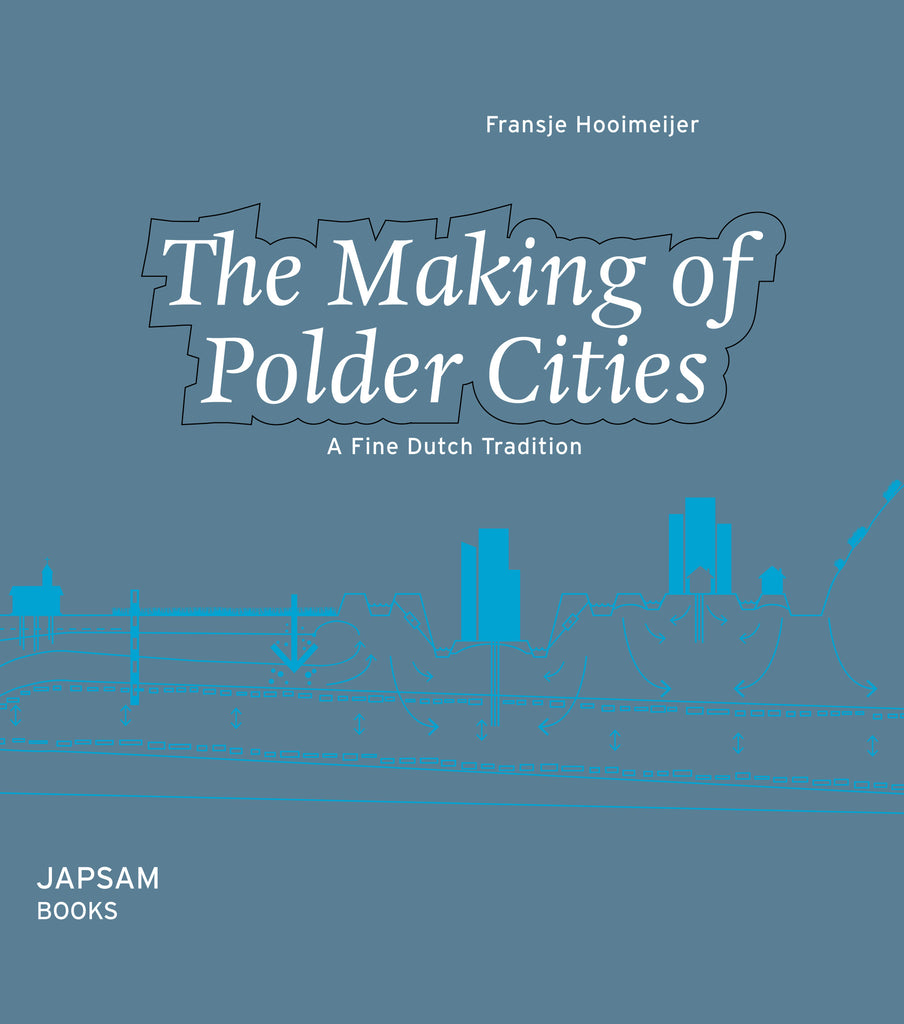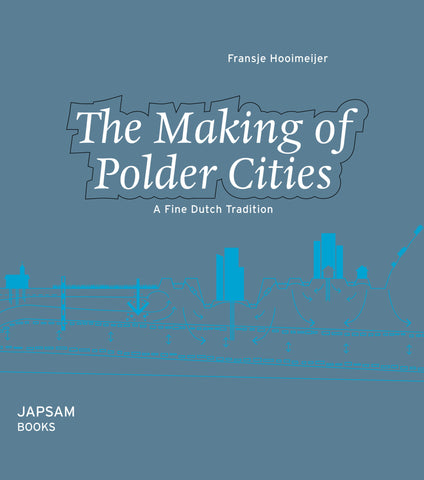Your cart is currently empty!
Architecture
The Making of Polder Cities
+++A Fine Dutch Tradition+++
+++Fransje Hooimeijer+++
978-94-90322-50-2
Studio Minke Themans
264
25 x 28 cm
Softcover
English
1143 grms
This publication is published with the support of Delft University of Technology/DIMI, EFL Stichting, Stichting Job Dura Fonds, Stichting Bevordering Volkskracht/Jurriaanse, G.Ph. Verhagen-Stichting, Stadsarchief Rotterdam, Deltaprogramma NHS, Stichting N.H. Bos, Delft University of Technology/Environmental Technology and Design
In the Netherlands, climate change has brought more frequent and extreme rainfall causing pluvial flooding. Though the Dutch have dealt with water for centuries, since the Industrial Revolution urban water systems have become very inflexible and are now unable to deal with these new conditions. Despite the long tradition of building in wet and soft soil conditions, there has been little systematic research on building-site preparation and its relation to urban development and design.
This book addresses this issue, investigating the relation between the available technology, the attitude towards the natural conditions, and the urban design in a framework of seven phases. Until the Industrial Revolution, methods of construction, specifically the way the city could be made, were the basis for the urban design. However, since technology has made it possible to start with the urban design, the connection with the natural system of the landscape has been lost. By understanding the hydrological system and appropriate methods of building-site preparation, we can reconnect urban design to the natural system.


Fransje Hooimeijer studied Arts and Culture Studies in Rotterdam Erasmus University and has worked as an independent researcher in the fields of architecture, urban design and landscape architecture since 1997. In addition to various publications and exhibits, she has done research for government and corporate clients.
Hooimeijer received her PhD in Urbanism from the Faculty of Architecture at the Delft University of Technology in 2011. Since 2009, she has worked as a researcher at the Delft University of Technology and at TNO, investigating the technology of urban development in the light of climate change and the energy transition. One of her main research topics is integrating the subsoil system into above-ground spatial development. Since 2012, she has been Assistant Professor in Environmental Design and Technology, continuing research in technical systems of urban development and transferring this knowledge to master's students of Urbanism.
A Fine Dutch Tradition
€34.00
The Making of Polder Cities
A Fine Dutch Tradition
€34.00
Architecture / Landscape | Nature / Theory / Urbanism
978-94-90322-50-2
Studio Minke Themans
264
25 x 28 cm
Softcover
English
1143 grms
This publication is published with the support of Delft University of Technology/DIMI, EFL Stichting, Stichting Job Dura Fonds, Stichting Bevordering Volkskracht/Jurriaanse, G.Ph. Verhagen-Stichting, Stadsarchief Rotterdam, Deltaprogramma NHS, Stichting N.H. Bos, Delft University of Technology/Environmental Technology and Design
In the Netherlands, climate change has brought more frequent and extreme rainfall causing pluvial flooding. Though the Dutch have dealt with water for centuries, since the Industrial Revolution urban water systems have become very inflexible and are now unable to deal with these new conditions. Despite the long tradition of building in wet and soft soil conditions, there has been little systematic research on building-site preparation and its relation to urban development and design.
This book addresses this issue, investigating the relation between the available technology, the attitude towards the natural conditions, and the urban design in a framework of seven phases. Until the Industrial Revolution, methods of construction, specifically the way the city could be made, were the basis for the urban design. However, since technology has made it possible to start with the urban design, the connection with the natural system of the landscape has been lost. By understanding the hydrological system and appropriate methods of building-site preparation, we can reconnect urban design to the natural system.


Fransje Hooimeijer studied Arts and Culture Studies in Rotterdam Erasmus University and has worked as an independent researcher in the fields of architecture, urban design and landscape architecture since 1997. In addition to various publications and exhibits, she has done research for government and corporate clients.
Hooimeijer received her PhD in Urbanism from the Faculty of Architecture at the Delft University of Technology in 2011. Since 2009, she has worked as a researcher at the Delft University of Technology and at TNO, investigating the technology of urban development in the light of climate change and the energy transition. One of her main research topics is integrating the subsoil system into above-ground spatial development. Since 2012, she has been Assistant Professor in Environmental Design and Technology, continuing research in technical systems of urban development and transferring this knowledge to master's students of Urbanism.



